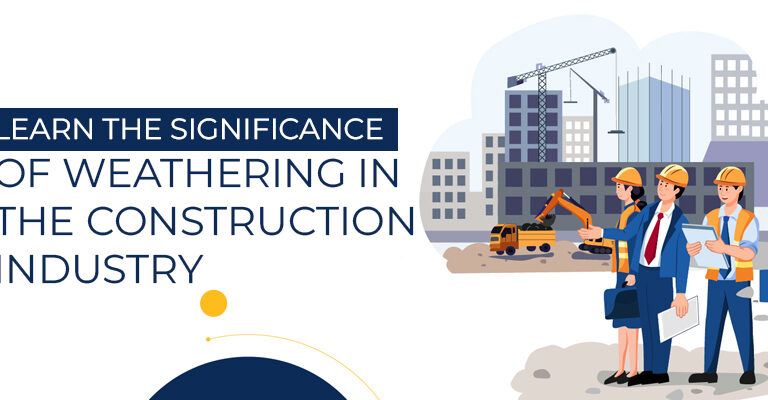Weathering holds considerable importance from a civil engineering perspective because most civil structures constructed by many building contractors in Chennai use concrete masonry, and rock. Weathering can be defined as the process of deterioration, erosion, and breakdown of stones caused by various physical and chemical forces. Weathering occurs due to various weathering agents, including heat, rain, smoke, and constant fluctuations in temperature between day and night. Weathering becomes evident when the texture of an object deteriorates. Hence, this blog will explore the significance of weathering and its types.
The Importance Of Weathering:
Erosion Control:
Weathering helps control erosion by breaking down rocks into smaller particles. This process prevents soil erosion and sediment buildup in rivers and lakes.
Soil Formation:
Weathering is essential for soil formation. As rocks break down, they release minerals that enrich the soil, making it fertile for plant growth.
Landform Creation:
Weathering forms various landforms, such as valleys, canyons, and caves. Over time, the gradual breakdown of rocks shapes the landscape.
Mineral Resource Release:
Valuable minerals are often locked within rocks. Weathering exposes these minerals, making them accessible for extraction and use.
Weathering Characteristics:
- Physical and chemical weathering processes are closely intertwined with the development and essential functions of plants and animals and the subsequent deterioration of their byproducts.
- The optimal conditions for weathering are during the preservation and creation of weathering byproducts involving a subtropical or tropical climate and minimal terrain erosion.
- When subjected to weathering, stone mattress exhibits a geochemical zonation characterized by an intricate nutritional composition in each zone, extending from the top to the base.
- Minerals with diverse chemical compositions are generated based on the acidity or alkalinity levels in the environment, as well as the influence of biogenic factors. These minerals range from those that thrive in an alkaline environment (found in lower layers) to those that thrive in either acidic or neutral conditions (typically in upper horizons).
Different Forms Of Weathering:
Mechanical Weathering:
This type of weathering involves the physical breakdown of rocks into smaller pieces without altering their chemical composition. Typical processes include frost wedging, abrasion, and exfoliation.
Chemical Weathering:
Chemical weathering pertains to the deterioration and erosion resulting from chemical processes. An illustrative example of chemical weathering is sulfate attack, which can adversely affect masonry and concrete structures. Essentially, chemical weathering results from chemical reactions involving electrons in the atmosphere and the surface rocks. These chemical transformations primarily occur in the presence of water, typically through rainfall, which can dissolve various active atmospheric pollutants, including carbon dioxide, hydrogen, nitrogen, and more.
Biological Weathering:
In this type of weathering, deterioration and erosion are caused due to living organisms such as microorganisms, plants, animals, fungi, and bacteria. Some common forms of biological weathering are fracturing rocks due to tree roots or burrowing animals can physically break rocks apart.
It often collaborates with physical weathering by breaking down rocks and exposing them to the effects of chemical or physical weathering forces.
Weathering is a dynamic process that shapes our world in remarkable ways. Understanding its significance and the various types of weathering helps us appreciate how natural forces continuously sculpt the Earth’s surface. For creating breathtaking construction, approach Sathvik, one of the best individual home construction builders in Chennai who have invaluable knowledge for site selection, material choices, and construction practices to ensure durable and sustainable homes.







